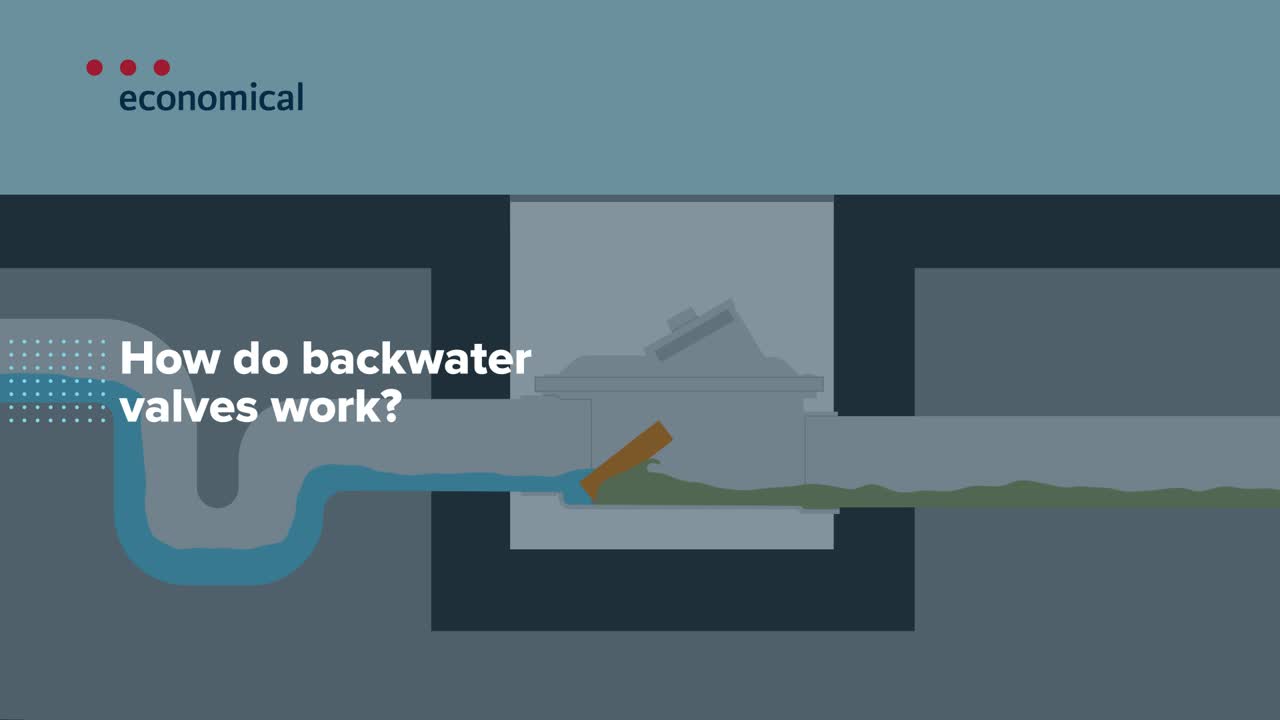How to prevent a sewer backup
Written by Stephanie Fereiro | Published on: April 23, 2019 | Categories: Home insurance
The sound of running water can be soothing…unless that water is running somewhere it shouldn’t be, like your basement floor. Water damage is the leading cause of home insurance claims in Canada — and there are many ways unwanted water can end up in your home. One common cause of water damage is sewer backup, which happens when water begins to flow backwards into your home. Yes, this is just as unpleasant as it sounds. Not only does exposure to sewage pose a health hazard, but the clean-up process is extensive and costly. Learn how to prevent a sewer backup and find out if your home insurance policy would cover a backup if one should occur.
What causes a sewer backup?
A sewer backup occurs when something blocks the normal flow of wastewater from your house to the city’s sanitary sewer, and the sewage starts to back up into your home. There are several factors that can contribute to a sewer backup, including:
- Aging sewer systems
- Too much rainwater or melted snow entering the sewer system at once
- Broken or collapsed sewer lines
- A cracked or deteriorated sewer lateral (the pipeline between the city's sanitary sewer main and your home)
- Tree roots entering sewer lines
- Blockages in city sanitary mains
- Blockages in plumbing inside a building
- Sump pump failure
How do you prevent a sewer backup?
There are some simple things you can do to help prevent sewage from backing up into your home:
- Don’t treat your toilet like a garbage can. The only things you should flush down the toilet are human waste and toilet paper. Don’t flush items like diapers, wipes, cigarette butts, paper towels, facial tissues, or personal hygiene products down the toilet — even if they say they’re “flushable.”
- Throw grease and other clog-causing materials in the garbage, not down the sink. That includes bacon fat, coffee grinds, and food waste.
- Install a backwater valve. A backwater valve (sometimes called a backflow valve) could reduce the likelihood that sewage will flow into your basement when the main sewer system begins to back up. It allows water from your toilets, sinks, and bathtubs to flow out of your home — but if water begins to flow backwards, the flap on the backwater valve will close and stop it. While backwater valves aren’t suitable for every home, consider having your plumbing system inspected by a professional to find out if your home qualifies.
How does a backflow valve work?

- When everything is running smoothly, your backwater valve allows water to flow out of your home and into the main sewer system.
- In the event of a sewer backup, when water starts to flow from the main sewer system back into your home, it lifts a small floatation device that triggers the flap on your backwater valve to close, preventing sewage from backing up into your pipes.
- The flap will fall open again once the water begins flowing in the right direction.
- Without a backwater valve, a sewer backup could do a lot of damage.
How do you recognize a sewer backup?
You may not always recognize signs of a potential sewer backup until it’s too late — but contact a plumber right away if you notice:
- Seepage at basement floor drains
- A foul smell coming from your drains
- Toilets aren’t flushing like they should, and plunging doesn’t help
- More than one drain in your house is clogged
- When you use one piece of plumbing (like a toilet), water backs up somewhere else
- Bubbling after you flush a toilet or when a sink is trying to drain (and it happens more than once)
All of these may be signs that a sewer backup is brewing. If you notice sewage flowing into your drains, toilets, bathtubs, or showers, it’s probably safe to say a sewer backup is already coming on in full force. Either way, your best bet is to stop using your water, turn off your home’s main water supply, and contact a plumber right away.
Depending where you live, your municipal government may want to send an inspector to determine if the problem is in the main sewer or in your own pipe before you bring in your own plumber. Check your municipal government’s website to learn more.
Does home insurance cover sewer backups?
Basic home insurance policies don’t usually cover sewer backups, but most insurance companies offer sewer backup coverage as an optional add-on at a relatively low cost. If you don’t already have this coverage, ask your group’s broker to find out if you qualify — you wouldn’t want to be left to clean up the mess on your own in the event of a sewer backup.
Share these tips on Facebook or Twitter to help others prevent sewer backups, too.